June 25, 2021
Air Date: June 25, 2021
FULL SHOW
SEGMENTS
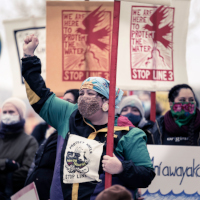
Line 3 Pipeline Threatens Native Way of Life
View the page for this story
The Keystone XL pipeline has been finally cancelled, and activists are now ramping up actions against the Line 3 pipeline, which, like Keystone, would bring carbon heavy tar sands oil from Canada into the United States. Host Jenni Doering is joined by Frank Bibeau, a tribal attorney representing the White Earth Band of Ojibwe. (09:42)
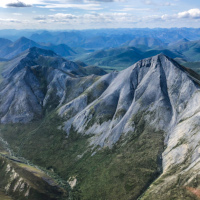
Oil Leasing Court Fights
View the page for this story
One of President Biden’s key campaign promises was to wean the country off of fossil fuels and move towards sustainable energy sources. He’s attempting to achieve this in part by halting the sale of new oil and gas leases on public lands, including at the Arctic National Wildlife Refuge, but these efforts have been challenged in the courts. Vermont Law School Professor Pat Parenteau joins host Jenni Doering to discuss the legal issues of pausing oil and gas development. (11:31)
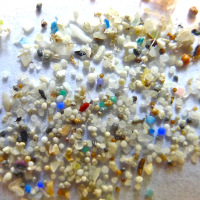
Plastic Waste Suppliers
View the page for this story
The world is literally awash in plastic waste, with 8 million metric tons of plastic flowing into our oceans every year. Much of that waste is take-away packaging, and a recent study found that only 20 companies are responsible for most of this waste. Host Bobby Bascomb talks with Judith Enck, founder of Beyond Plastics, about why fossil fuel companies are moving towards more plastic production, as well as what alternatives and next steps we can take to avoid using single-use plastics. (11:28)

Beyond the Headlines
/ Peter DykstraView the page for this story
This week Environmental Health News editor Peter Dykstra joins host Jenni Doering to talk about a chemical factory fire in Rockton, Illinois that was put out with flame retardants containing PFAS "forever chemicals". Next they dive into companies like Logitech and Panera Bread that are putting carbon labels on their products. Finally they look back on when Senator Jim Inhofe, a well-known climate denier in Congress, fell seriously ill after swimming in a lake full of blue green algae from record heat levels. (04:31)
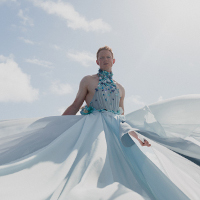
Hiking in 6-Inch Heels
View the page for this story
Growing up as a queer person, photographer Wyn Wiley was often told: The great outdoors is for everybody, but only if you look and act a certain way. Now, he works to break down this barrier. His drag queen alter-ego, Pattie Gonia, hikes in 6-inch heels and a full face of makeup, preaching on Instagram that enjoying the outdoors transcends gender identity and sexual orientation. Wyn Wiley speaks with Bobby Bascomb as Pattie to discuss her journey as a queer environmental activist and the solace she finds in nature. (10:40)
Show Credits and Funders
Show Transcript
210625 Transcript
HOSTS: Bobby Bascomb, Jenni Doering
GUESTS: Frank Bibeau, Judith Enck, Pattie Gonia, Pat Parenteau
REPORTERS: Peter Dykstra
[THEME]
BASCOMB: From PRX – this is Living On Earth.
[THEME]
BASCOMB: I’m Bobby Bascomb.
DOERING: And I’m Jenni Doering
Native Americans invite activists to help them protest the Line 3 tar sands oil pipeline in Minnesota.
BIBEAU: We already have a pre-existing right to be there. And so if we're not trespassing, and we have a right to be there and gather and have free speech, then we should also have the right to have guests. And if our house is on fire, our guests should be able to help us put the house out. You know, because our home is in danger.
BASCOMB: Also, a chat with an environmentalist drag queen on making nature more accessible for all.
PATTIE GONIA: When I do drag in the outdoors I feel the most me. And yes, that means literally backpacking in high heels, which you can think is a very silly and stupid and dangerous thing but so is riding a mountain bike down a mountain at 45 miles an hour. So you know, pick and choose your danger in the outdoors. I just choose to wear six inch heels.
BASCOMB: That and more this week on Living on Earth – Stick Around!
[NEWSBREAK MUSIC: Boards Of Canada “Zoetrope” from “In A Beautiful Place Out In The Country” (Warp Records 2000)]
[THEME]
Line 3 Pipeline Threatens Native Way of Life
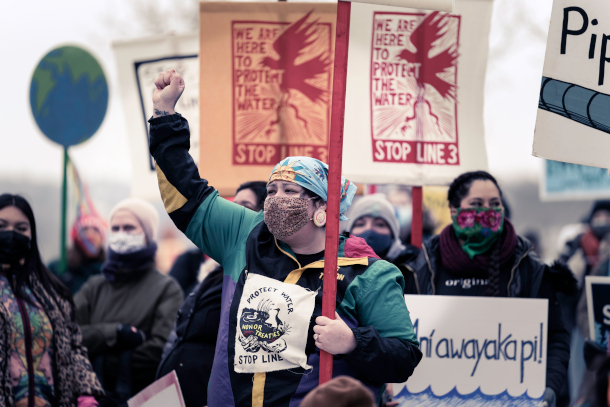
Water protectors and other activists gather to protest the Line 3 pipeline in St. Paul, Minnesota. (Photo: Lorie Shaull, Flickr, CC BY-SA 2.0)
BASCOMB: From PRX and the Jennifer and Ted Stanley Studios at the University of Massachusetts Boston, this is Living on Earth. I’m Bobby Bascomb.
DOERING: And I’m Jenni Doering
After a decade-long battle, the Keystone XL pipeline has been officially cancelled and now, activists are ramping up actions against the Line 3 pipeline, which, like Keystone, would bring carbon heavy tar sands oil from Alberta, Canada into the United States. Line 3 is facing strong opposition from Native American tribes and environmental activists. They are concerned that the pipeline would carve a new path through delicate wetlands and the treaty territory of the Anishinaabe peoples in northern Minnesota. For more, we turn now to Frank Bibeau, a tribal attorney representing the White Earth Band of Ojibwe. Frank, welcome to Living on Earth!
BIBEAU: Miigwech, thanks for having me.
DOERING: Can you tell us a little bit about what the water in the Great Lakes region means for you?
BIBEAU: Well, for us, that would almost be our entire cultural migration, spiritual story about how we came here. We migrated from the east coast, all the way through the Great Lakes to Minnesota where the food grows from the water. And that's wild rice. And so that whole area, that whole region of those great lakes, and here in Minnesota, at the headwaters of the Mississippi River, these are really the most important parts of our continent. One of the things that people don't know about the North American continent is three of the four watersheds for North America meet right here in Minnesota. And that place used to be the high point of the three watersheds besides the Rocky Mountains. But because of iron ore, they've mined all the way around this place. And while they know it's a spiritual place for us, they have like the cyclone fence and gates and, and that's how they protect our old historical, spiritual place. And now the tailings in the dumps from the extraction, the parts that they don't use, and they dump way over to another place, those are the high places. So in actuality that the center of the watersheds has been shifted by extraction of ore and rock from Minnesota.
DOERING: So what are some of the risks that are associated with this construction of this new stretch of the Line 3 pipeline?
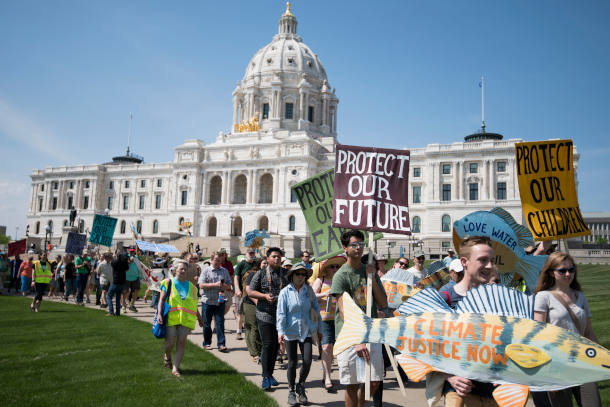
Protesters gather to speak out against the construction of the Enbridge Line 3 pipeline outside the Minnesota capitol in 2018. (Photo: Fibonacci Blue, Flickr, CC BY 2.0)
BIBEAU: I would say there are two or three primary risks that we're concerned about. Number one is climate change. And that's what makes everything here the same as KXL and TransCanada and everything else that they were trying to do to get the tar sands oil out. Right now, the Shell River, as far as we can tell, and we've been in occupation camp down there. And you know, I look at that Shell River as being a place that they obviously ignored, because they're crossing the Shell River five times. And that tells me they don't understand what this cultural corridor is because it goes right from great wild rice harvesting. And if you go over to Shell Lake, then you're at the plains. And that's where you go out to go buffalo hunting. So this was a natural corridor already. And they don't seem to understand that from the work that they've done, because they're permitting the pipe to go through what looks like it's a large old village area. But because they've only found two areas that are, say two miles apart, then they say that they're not coming in within a mile of the two sites. But I would say that the two sites are connected, number one. Number two, I would say this is just like Standing Rock again, because one of the concerns and arguments was that the pipeline needed to be more than a half mile away from the reservation. Well, they were 0.55 miles from the reservation, so they were as close as you could possibly get without supposedly violating whatever that number was. And so that's how they look at this puzzle. They're using the water appropriations to drop the water levels. The rice is popping up out of the ground without having the water to support it. And there was a meeting of the Minnesota Chippewa tribe, the Tribal Executive Committee of the six Reservations met. And there was ultimately a letter that was drafted and sent to the governor with regard to the water appropriation for Enbridge in particular. And so there was a demand for consultation. I don't know what the deadline is. I don't have the letter yet. But we've only got a few days. And if the governor doesn't respond to that, then I think the next thing is actual litigation again, against the state of Minnesota.
DOERING: Frank, how do your Ojibwe peoples' treaty rights play a role in the legal battle against Line 3?
BIBEAU: One of the ways that it plays a role, besides our spirituality and being connected and making us have no other choice but to defend. One of the things that happened in some of the Federal cases that have happened, they look at the primary treaty food. And so out west where they have a case that sometimes referred to as Culverts versus Salmon, they found that the salmon was the primary treaty food of those tribal members, and they're going to have to spend several billion dollars to restore those waterways, so the salmon can return. And the same thing with the Klamath River and even though it's got water, it's killing the fish. So their primary treaty food isn't living in a quality environment that supports them so that the people can harvest them. So you start looking at that kind of case law. And you come over to where we are. Our 1837 Treaty says, hunt, fish and gather wild rice. That automatically makes wild rice our primary treaty food. That's the supreme law of the land. That's beyond Minnesota, and that's what they don't get.
No matter what setbacks we face in our fight to #StopLine3, we aren't going anywhere until this pipeline is dead.
— Honor the Earth (@HonorTheEarth) June 25, 2021
Stand with us and write to @POTUS @JoeBiden to tell him he must take action today: https://t.co/RmtCRsHsTC pic.twitter.com/VpFU2TUrsC
DOERING: Now, Enbridge Line 3 did recently clear a major legal hurdle when its approval was upheld by the Minnesota Court of Appeals. So what now? What opportunity do you see for stopping the pipeline?
BIBEAU: We've been working on this for years. And one of the things that we're doing with law enforcement right now, which they don't always understand that comes back to our treaty rights. We have a conservation code that provides for hunt, fish, and gather. And sometimes when tribal members are out hunting, fishing, and gathering, they end up in a trespass circumstance. And a lot of times the state Conservation Officer wants to send that to state court. But in reality, that tribal member's rights are protected by our off reservation conservation code. And we have prohibited trespass in there. And so when you're charging a tribal member, if they're on public land, which is most of the territory that the pipeline crosses, from Park Rapids to Superior, we already have a preexisting right to be there. And so if we're not trespassing, and we have a right to be there, and gather and have free speech, then we should also have the right to have guests. And if our house is on fire, our guests should be able to help us put the house out, you know, because our home is in danger. And so we're going to try to also extend our rights to other people, other tribal members, just as people from here went to DAPL and to KXL, because we have to defend the entire planet. You can't just pick your local spot.
DOERING: Now, we've been hearing a lot of calls recently from activists for President Biden to shut down this pipeline, to stop Line 3. What exactly is it that you're looking for Biden to do?
BIBEAU: Well, in reality, we've never had an honest environmental review, that considered our tribal rights in a meaningful way. And so White Earth and Red Lake, we let them know right at the beginning that we believe our treaties require consent. We believe that we have water rights, we believe that the federal law that grants you some jurisdiction over things specifically exempts your right to regulate our rights under public law 280. And that you can't just unilaterally give our stuff away and do these things. And the administrative law judge for that proceeding said, Well, these are federal rights. And so they didn't want to hear them in the state court. Well, that's not how property rights work for white people. That's just how it works for Indians. And so they didn't even have a public comment period, on any draft environmental impact assessments, and then just granted it also. And so that's why we had to sue the Corps of Engineers last December, right before Christmas.

Frank Bibeau, a tribal attorney representing Honor the Earth and the White Earth Band of Ojibwe. (Photo Courtesy of Frank Bibeau)
DOERING: Well, what authority do you think the President has to stop Line 3 at this point?
BIBEAU: Well, he probably has a couple kinds. I mean, the most logical one is to say: Corps of Engineers, you know that there wasn't a good environmental impact statement that went on. It should have happened with all this much water and all the Indians and the treaty rights. Let's pull that back and review it. That would be the honest way of doing it. That's what happened in Standing Rock. And that's what happened out there, you know, in Washington and Seattle, we have the fisheries out there. You know, unfortunately, we always end up having to sue them. And, you know, we would like to think that the President can have the right people say we made a mistake under a bad administration. And we pointed it out to him, the state of Minnesota came to the right conclusion, but disregarded it for political reasons. They look at our rights as being federal, you're the federal entity, you have a role.
DOERING: Well, what's coming up next, Frank, what should we be looking for on this, in this Line 3 fight?
BIBEAU: You're gonna see actions from manoomin. Manoomin is our word for wild rice. Manoomin actually means the good berry, that would be out of all the things that we pick, or gather, that would be the primary berry that we would want. So what we're looking at is we've created Rights of Manoomin so that it's recognized how mainstream people would see in law like a corporation, where it's given its own rights to exist and flourish and be protected. And the tribal members have a right to protect manoomin as well because of our religious freedoms. And so we're going to start using those kinds of laws and concepts against the state of Minnesota because they're harming those things. And it's going to be, I think, a very interesting fight and people are going to see that tribes have rights that have not been recognized very well and we're going to assert them.
DOERING: Frank Bibeau is the tribal attorney representing the White Earth Band of Ojibwe. Thank you so much, Frank.
BIBEAU: Have a great day. Miigwech.
Related links:
- Vox | “The Keystone XL Pipeline Is Dead. But the Fight Against Similar Projects Is Far from Over.”
- Click here to listen to LOE’s recent story on the Line 3 pipeline
- NYTimes | "Biden Administration Backs Oil Sands Pipeline Project"
[MUSIC: Edgar Meyer & Chris Thile, “This Is the Pig” on Edgar Meyer & Chris Thile, by Edgar Meyer and Chris Thile, Nonesuch Records]
BASCOMB: Coming up – We’ll take a look at the latest battle over another controversial fossil fuel interest, the Arctic National Wildlife Refuge.
ANNOUNCER: Support for Living on Earth comes from Sailors for the Sea and Oceana. Helping boaters race clean, sail green and protect the seas they love. More information at sailors for the sea dot org.
[CUTAWAY MUSIC: Chandler Travis Philharmonic, “Cymbal 426” on Llama Rhymes, by J. Spampinato/J. Styklunas/R. Bates/B. Pilkington/M. M. Chenevert/Chandler Travis, Sonic Trout Records]
Oil Leasing Court Fights

An aerial view of the expansive mountainous landscape in the Arctic National Wildlife Refuge. (Photo: Danielle Brigida, Flickr, Public Domain)
BASCOMB: It’s Living on Earth, I’m Bobby Bascomb.
DOERING: And I’m Jenni Doering.
The Arctic National Wildlife Refuge in Alaska has been the focus of one of the biggest battles over fossil fuel development in the US. It's especially controversial because the coastal plain where drilling would occur is home to the calving grounds for the Porcupine caribou. And it’s consecrated land for the indigenous Gwich'in people who know it as "the sacred place where life begins". The Republican-led Congress passed legislation in 2017 that authorized development of ANWR for oil and gas, as part of the Tax Cuts and Jobs Act. The Trump administration held lease sales there just before leaving office, but the Biden administration paused all new oil and gas leasing just days after taking office and has also suspended the ANWR leases. Now, a federal judge in Louisiana has paused the pause, saying the President had no such authority. Here to discuss is Vermont Law School Professor Pat Parenteau. Pat, welcome back to Living on Earth!
PARENTEAU: Nice to be with you, Jenni.
DOERING: So please first get us up to speed on what the Biden administration is trying to do to halt new leases for drilling on federal lands, including in the Arctic National Wildlife Refuge. How exactly was the administration proposing to pause those leases?

Caribou graze on the grass under the backdrop of an oil rig in Prudhoe Bay, Alaska. (Photo: Erika Hall, Flickr, CC BY-SA 2.0)
PARENTEAU: Yeah, the Biden administration through the new Interior Secretary Haaland, issued what's called a suspension order. The leases were granted in the Trump administration, they were sold for, I think something around $58 million. One of the interesting things about that lease sale was that none of the oil companies bid on the leases. And none of the American banks agreed to finance any development and ANWR. So it was the state of Alaska through a coalition that actually bought the leases. So they were sold. And the next step would be permits for exploration, which would have a big impact on this very sensitive tundra, coastal plain of ANWR. And before any of those drilling or exploration permits, I should say, were to be processed, Secretary Haaland put a stay, a suspension on the leases. That's been challenged, of course, by the state of Alaska and some other groups in American Petroleum Institute. So that case is pending. And what the Biden administration is saying is that there were irregularities in the way the leases were offered by the Trump administration, not the least of which was a faulty environmental impact statement under the National Environmental Policy Act. For example, the leasing process did not consider the climate change impacts of leasing the coastal plain. And so the suspension was designed to give Interior time to review these issues and come up with a determination as to how they would proceed, including potentially canceling the leases.
DOERING: Now, I understand that just recently, a federal judge in Louisiana actually put a pause on the Biden administration's pause. He delivered this preliminary injunction on the administration's decision to pause leasing. So what's going on there, Pat?

The Arctic National Wildlife Refuge has become a nursery ground for polar bears. The expansion of oil leasing in ANWR puts the endangered species at particular risk. (Photo: Cheryl Strahl, Flickr, CC BY-NC 2,0)
PARENTEAU: The judge you're talking about is a Trump appointee to the federal district court in Louisiana, of course, Louisiana, heavily dependent on Gulf Coast oil development. So not a big surprise to some of us that you might find a Trump appointee, siding with industry. It was a preliminary decision. The Biden administration is reviewing its options. One option would be to go to the Fifth Circuit Court of Appeals and request a stay of the district court's order. Another option, which Secretary Haaland hinted at in some testimony she recently gave in the Congress in the United States Senate, is that they might accelerate this ongoing review. I mentioned the review of the ANWR leases, but there's a much broader review of the entire federal oil and gas leasing program both offshore like the Gulf and onshore all the public lands in the western United States which supplies something on the order of a quarter or a third of the oil and gas that the nation either consumes or exports. The judge in Louisiana said that Interior has no authority to pause leases and let alone cancel them or deny them. And that's an issue, I should say, that hasn't been resolved in the federal courts. We don't have a definitive ruling, certainly not from the Supreme Court., on how much discretion will the Biden administration have going forward in both holding lease sales, and awarding leases. So will Interior hold off appealing this lower court decision in order to build a better record for why it acted to suspend those leases in the Gulf as well as leases elsewhere? And I'm thinking that's probably what the administration will do. They'll be on stronger legal ground, I think, if they bolster the record. Again, you have the same kinds of problems with the Gulf Coast leasing, as you had in Alaska, and that is a failure to deal with the climate effects of all of this ongoing leasing. The other interesting point is that there's already more oil and gas under lease in the United States, both offshore and onshore and even in the state of Alaska, than the oil companies can possibly develop over the next 10 years. That's how much leasing took place, not only under the Trump administration, by the way, this goes all the way back to the Obama administration, Obama leased more federal land for oil and gas than any other president. This isn't strictly a partisan issue. This is a bigger geopolitical issue about energy policy. So this issue of what's the future of oil and gas leasing under these federal programs, wide open and much to be determined going forward.
DOERING: Right, I mean, what's really at stake here? You know, it sounds like the supply is not an issue for these oil companies. There's plenty of leases out there already that are under contract. So why are they putting up such a big fight in places like the Arctic National Wildlife Refuge, and across the board?
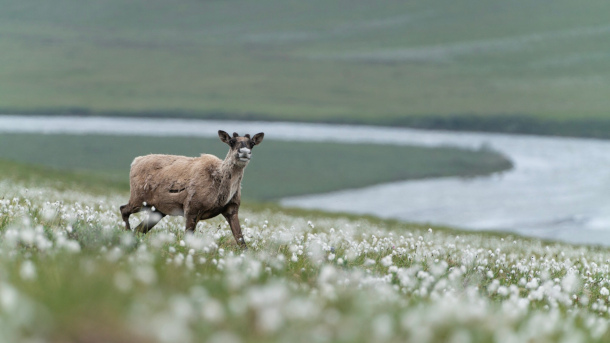
The Arctic National Wildlife Refuge is home to a vast array of wildlife, including caribou. (Photo: Danielle Brigida, Flickr, CC BY 2.0)
PARENTEAU: It's interesting that the oil companies themselves are experiencing, you know, a change, shall we say. And, you know, companies like Shell, which of course has just recently been issued a judgment in the Netherlands, from a Dutch court ordering Shell to reduce its emissions by 45% by 2030. Shell had already announced it was going to be net carbon zero by 2050. And Shell's response to this Dutch court decision is that is simply going to accelerate our timeframe. You can go down the list BP, British Petroleum, responsible for Deepwater Horizon blowout, of course, has made lots of noise, about diversifying its energy portfolio, investing in renewables and so forth. So the demand side of this equation is shifting. We're also seeing a big shift in the financial markets. We saw what BlackRock with $7 trillion in assets said no more leasing, we're not going to include in our portfolio anymore new leasing. That's not to say they're going to eliminate ongoing leasing activity, but no more new leasing. No more coal, said BlackRock, a lot of these battles that we're seeing are kind of the death throes of the industry. We saw that with the coal companies going bankrupt back in the Obama, two terms of the Obama administration, the coal industry is not coming back in the United States. And I think the oil and gas industry is poised to experience the same kind of maybe not as abrupt change, because we do need liquid fuels. I mean, we're not ready to shift completely to electricity in this country, either for heating or for transportation. So we're going to need oil and gas. The question is, how fast can we bring renewables on and electric vehicles on to completely eliminate the demand for oil and gas? That's the issue today.
DOERING: So President Biden hasn't been completely consistent in his administration's fossil fuel development policies. You know, in part, he's responding to this call for moving away from fossil fuels. He revoked the permit for the Keystone XL pipeline, but he is still allowing the Dakota Access pipeline to continue operating for now. He said no to drilling in the Arctic National Wildlife Refuge. But he had to say yes to an oil drilling project in the nearby National Petroleum Reserve also in Alaska. So he's seems to be balancing the continuation of fossil fuel development for now with move away from it as well. How do you see this trend fitting in with Biden's longer term goals of getting the country off of fossil fuels someday entirely?
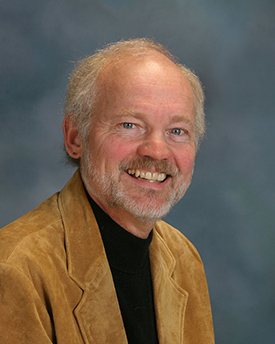
Former EPA Regional Counsel Pat Parenteau teaches environmental law at Vermont Law School. (Photo: Courtesy of Vermont Law School)
PARENTEAU: Yeah, he's really trying to balance on a knife point, isn't he? It's all about the politics of these various issues. For example, the National Petroleum Reserve is an interesting comparison to ANWR. I mean, the National Petroleum Reserve was set up to develop oil and gas and commitments were made by Congress to the state of Alaska. And a lot of investment has gone in to the National Petroleum Reserves. So you know, it's clear, he's drawing a line between New leasing and ANWR, and ongoing leasing in NPR, the National Petroleum Reserve. And the same thing with Keystone and Dakota Access. In Keystone's case, he was saying I'm revoking the permit to bring the tar sands into the United States for this proposed new pipeline. I mean, there are parts of this pipeline already exists, but the key question was, was he going to allow a major expansion of imported tar sands from Alberta? So there again, you see, that's a preemptive strike. That's Biden saying, no, we're not going to, you know, expand the existing pipeline to bring in even more tar sands from Canada with regard to Dakota Access, on the other hand, that pipelines obviously finished. It's pumping all kinds of, you know, millions of gallons of oil every day. Lots of jobs depend on that. And that's a concern for Biden, you know, he's got to keep faith with the unions. They helped elect him, he took a hit by rejecting Keystone from the union. So that's exactly where Biden is going to be for the next three and a half years in his first term. He wants to accelerate the transition away from fossil. It's clear in his infrastructure bill, it's clear in his policies, but he's got to maintain enough political support to get things done in Congress. And you know, we know how narrow those margins are in both the Senate and the House, in the same thing with policies and rules. He's got to take account of the fact we now have the most conservative Supreme Court we've seen in a generation or more. And he can't simply assert all the authority he might want. He's going to have to temper what he can do with what the courts are going to allow him to do under existing law. So that's the reality for Joe Biden. He's working his way through a minefield, political, legal and other.
DOERING: Pat Parenteau is a professor of environmental law at Vermont Law School. Pat, thanks so much for taking this time with us today.
PARENTEAU: Oh, good to be with you, Jenni. Thank you.
Related links:
- New York Times | “Biden Sets in Motion Plan to Ban New Oil and Gas Leases on Federal Land”
- New York Times | “Federal Judge Says Biden Cannot Pause New Leases For Drilling on Public Lands”
- Learn more about the Arctic National Wildlife Refuge
[MUSIC: Lawrence Blatt, “Look To the Sun” on The Color Of Sunshine, by Lawrence Blatt, LMB Music]
Plastic Waste Suppliers
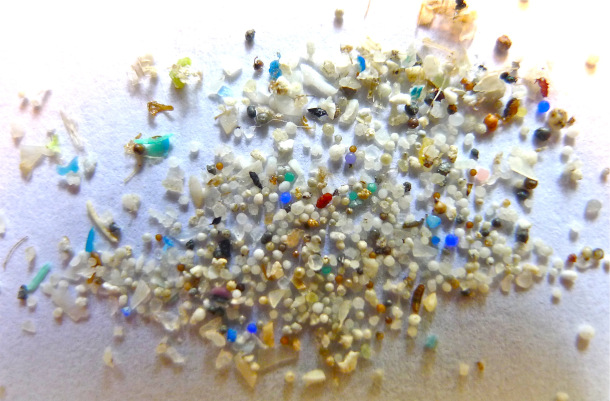
As tons of plastic litter our oceans, microplastics pose a growing problem for our ecosystems and our health. Not only are microplastics found in the world’s oceans, but they have been found in our food like salt and beer, and also in our bodies, according to an Italian study titled “Plasticenta.” (Photo: 5Gyres, Oregon State University, Flickr, CC BY 2.0)
BASCOMB: The world is literally awash in plastic waste. More than 8 million metric tons of plastic flow into our oceans every year. And the vast majority of that waste near shore, roughly 88 percent, is take away packaging, things like bottles, food containers, plastic bags and cutlery. A recent study published by the Australian based Minderoo Foundation found that at its root, just 20 companies produce more than half of the world’s single use plastic waste. For more, I’m joined now by Judith Enck founder of Beyond Plastics and visiting Professor at Bennington College. Welcome back to Living on Earth Judith!
ENCK: Oh, it's such a pleasure to be with you. Thanks. I love Living on Earth.
BASCOMB: Oh, thank you. Can you give us a bit of background on this study? What were they looking for? And what did they find?
ENCK: Well, this study is important, because for the first time it was looking at what are the companies that produce the most plastic feedstock. These are called polymers, they are the building blocks of all plastics. And the study documented that these plastic polymers are almost always made from fossil fuels. And this study found that in 2019, 20 companies made more than half of all single-use plastic waste generated worldwide. And top of the list are ExxonMobil and Dow, followed by Chinese government-owned Sinopec. So of about 300 polymer producers operating worldwide, it's only a small number of companies that are producing all of these plastics. The study went a little deeper, and looked at who are the investors and the banks that are enabling this massive production of single-use plastic, and the study identified 20 institutional asset managers that are backing these businesses: Vanguard group, BlackRock and Capital Group. So it's kind of interesting, the climate change advocates shifted from the emitters of greenhouse gases maybe ten, 15 years ago and started looking at who's financing -- who is enabling all of this dirty technology. And for the first time, this report did the same thing with plastic production.
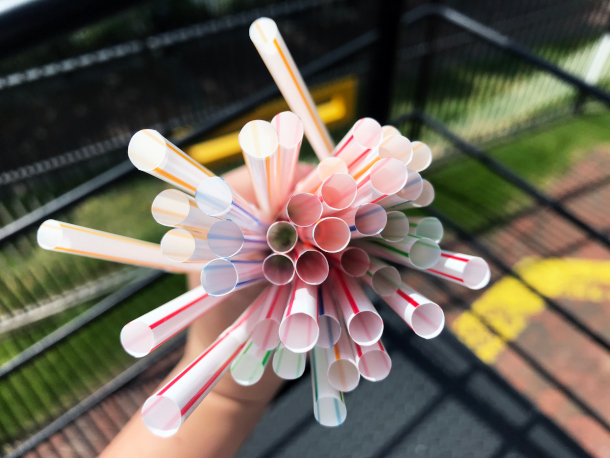
Plastic straws are amongst the top ten marine debris in the ocean and in the United States alone about 500 million plastic straws are produced each year. (Photo: Chemist 4 U, Flickr, CC BY 2.0)
BASCOMB: Well, that's really interesting. And you know, I think a lot of our listeners might be surprised to hear that the top companies aren't necessarily beverage companies or manufacturers of single-use plastic bags, for instance. But they're actually oil and gas companies.
ENCK: Oh, yes, plastic production is the plan B for the fossil fuel industry. What's happening is finally, finally we are moving away from using fossil fuels for the two major markets they've had historically. One is electricity generation -- we're now seeing more investment in renewable energy, like solar and wind, or geothermal. And then the second big demand for fossil fuel is transportation. And we're finally seeing much needed investment in mass transit, electric cars. And the fossil fuel industry is seeing their market reduced for electricity generation and transportation. So their plan B is plastic production. So they have teamed up with the chemical industry, thus the phrase petrochemical industries, and they are using massive amounts of fracked gas and chemicals to create new single use plastics. 98% of single use plastic is manufactured from fossil fuels.
BASCOMB: Well, of course, Exxon recently had three seats on their board of directors claimed by activist investors who are worried that the company, you know, wasn't moving away from fossil fuels quickly enough, given the way the market is changing. It sounds like you're saying that this is you know, they're seeing the writing on the wall here and they're shifting gears towards producing plastic instead.
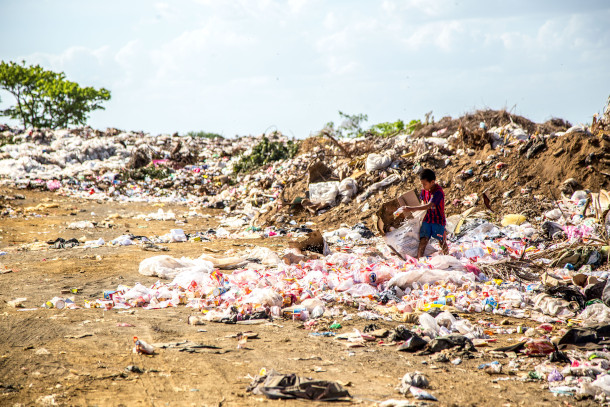
More than 350 million metric tons of plastic are produced each year and 91% of that is not recycled. In 2021 the Break Free from Plastic Pollution Act was introduced in Congress and aims to hold companies responsible for waste and recycling of a variety of products including plastics. (Photo: Recodoil, Flickr, CC BY 2.0)
ENCK: Yeah, and it's really tragic because they're producing plastic in low income communities of color. Exxon and other companies are investing in what's called ethane cracker plants where they take a waste product from fracking, heated at high temperature, thus the phrase cracking the gas, and then that's the main ingredient for single use plastic packaging. These are highly polluting facilities, they release air toxins, they release greenhouse gases, and they are always sighted in low income communities and communities of color. And these are not only risky for the community, people living near these petrochemical facilities, but also these are super emitters of greenhouse gases. And so we'd be cancelling out a lot of the progress we've been made. In fact, if plastic production and use grows us is currently projected, by 2030, the emissions from these petrochemical facilities will be the equivalent of what would be released from 295 new cars coal fired power plants.
BASCOMB: Wow. Well, you know, climate change, of course, is literally an existential threat to life as we know it. And there's a lot of scientists and a lot of policymakers working on this issue with activists pushing them on it. Can you talk about the scale of the plastic problem as compared to climate change? I mean, I know that they're very different, but related, and it seems almost, you know, the issue of plastic waste filling up rivers and ocean and microplastics being consumed by aquatic animals and things, it almost seems like a co equal problem to climate change, in terms of damage to the environment.
ENCK: Yes, absolutely. I mean, the reason I work full time on plastic pollution is because it's a climate change issue. And it's also a water quality issue and an environmental justice issue and a health threat. So in my mind, what's the worst thing you could do with fracked gas? I mean, I don't like fracked gas. But if you're using it to keep homes warm in the winter, you know, there's a public benefit to that. But using fracked gas to make more single use plastic packaging is really, really troubling. We're turning our oceans into landfills. About 15 million metric tons of plastic enter the ocean every year. 80% of that starts as litter. So why keep making cheap plastic packaging? The analogy I use is, let's say you walk into your bathroom at home, the bathtub is overflowing with water. Well, what you would do is try to turn off the tap as opposed to grabbing a mop or some towels. We need to turn off the tap on plastic production because when a plastic water bottle, for instance, or a plastic bag is littered, it gets into storm drains and then gets into a river gets out into the ocean where it becomes microplastics. Microplastics are everywhere. Microplastics are in our drinking water. It's been found in beer, in sea salt, in honey. And also in our own bodies. There's a new Italian study that came out in January that documented for the first time the presence of microplastics in the human placenta, both on the maternal side and the fetal side. And that's because we are all breathing in or consuming, through our mouths, about one credit card size the amount of plastic every single week. And we're going to have more of this is long as the fossil fuel industry continues this massive investment shift toward plastic production.
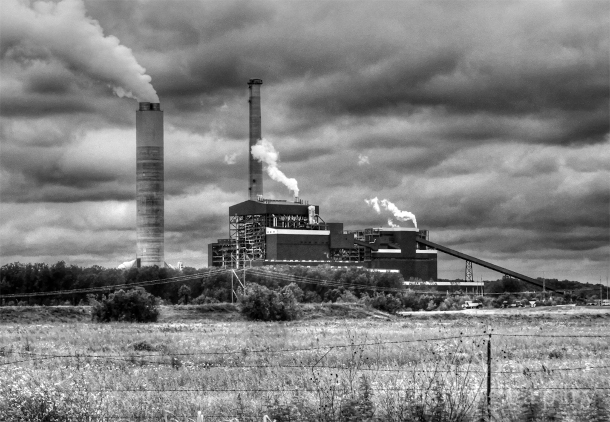
As more steps and investments are taken towards renewable energy and electric vehicles, fossil fuel companies are having to look at a different market: polymer production. Of the companies mentioned in the “Plastic Waste Makers Index,” most are fossil fuel companies, with 98% of single-use plastics manufactured by said companies. (Photo: Tanith K, Flickr, CC BY 2.0)
BASCOMB: Well, how do we turn off the tap, so to speak that you mentioned earlier? I mean, I don't need to tell you, if you walk through a grocery store, everything is wrapped in plastic, sold in a plastic bottle. I mean, it's hard to avoid. And here you have these multibillion dollar companies that are making a profit now from plastic. It's you know, there's a market for it. There's a demand for it, these people are making a lot of money from it. How do you stop that?
ENCK: Well, it's not easy. And certainly we can't recycle our way out of the problem. Plastics has a measly 8.5% recycling rate. So I think what we do is we move beyond plastics, there are viable, affordable alternatives. Things that we've used for decades, like cardboard and paper preferably made from recycled material. Another alternative is metal, glass. But the real important move is to shift away from single use products and shift toward reusable or refillable products. But I think what's clear is we need new laws, that industry is not going to change on their own. One reason is because single use plastics is really cheap. And one reason it's cheap is because it's made from fossil fuel that is heavily subsidized by federal and some state governments. So we need new laws like the Break Free from Plastic Pollution Act that does things like the national bottle bill. It bans single-use polystyrene food packaging, it bans plastic bags, it puts a fee on paper bags. You know the other problem and why I say we need new laws on the books, is because right now the producers, they produce all of this plastic packaging, and they have no financial responsibility to make sure that it's quote "disposed of properly," and they have no responsibility financially to make sure that their packaging is either reused or recycled. So they shift that economic responsibility to tax payers and consumers. And that's why the plastics crisis is just getting worse every year.
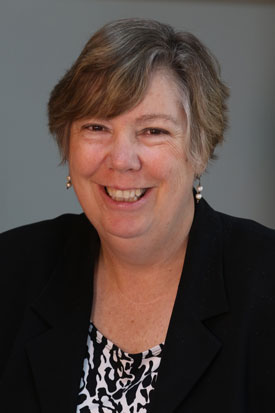
Judith Enck is founder of Beyond Plastics visiting Professor at Bennington College in Vermont and former Regional Administrator for Region 2 of the EPA. (Photo Courtesy of Judith Enck)
BASCOMB: Judith Enck is founder of Beyond Plastics and visiting professor at Bennington College. Judith, thank you so much for taking this time with me today.
ENCK: My pleasure. Thank you
BASCOMB: We reached out to each of the companies that Judith Enck mentioned earlier for a response. In an email, the investment management company Vanguard Group said of the companies they invest in “we do not dictate company strategy, or operational or financial decisions; rather, we hold company board’s responsible for being aware of such risks and opportunities.” The only other company to respond in time for broadcast was Exxon Mobil which said in part, “Industry, governments, nongovernmental organizations and consumers must work collaboratively to encourage appropriate recycling, reuse and recovery of plastic waste. You can read a full statement from each company on the Living on Earth website, LOE.org.
Related links:
- Read the study on “An inshore–offshore sorting system revealed from global classification of ocean litter” here
- Learn more about the “Plastic Waste Makers Index” here
- Italian study on “Plasticenta: First evidence of microplastics in human placenta”
- Beyond Plastics
- Reuters | "US Lawmakers Target Plastic Pollution, Producers in New Legislation"
[MUSIC: Thomas Mapfumo and the Blacks Unlimited, “Pasi Hariguti” on Rise Up, by Thomas Mapfumo, Real World Records]
DOERING: Coming up – Hiking in the great outdoors in full drag regalia and six inch heels. That’s just ahead on Living on Earth.
ANNOUNCER: Funding for Living on Earth comes from you, our listeners, and United Technologies, combining passion for science with engineering to create solutions designed for sustainability in aerospace, building industries, and food refrigeration.
[CUTAWAY MUSIC: Enrique Haneine, “Queen Of the Underground” on Unlayered, by Enrique Haneine, Elegant Walk Records]
Beyond the Headlines
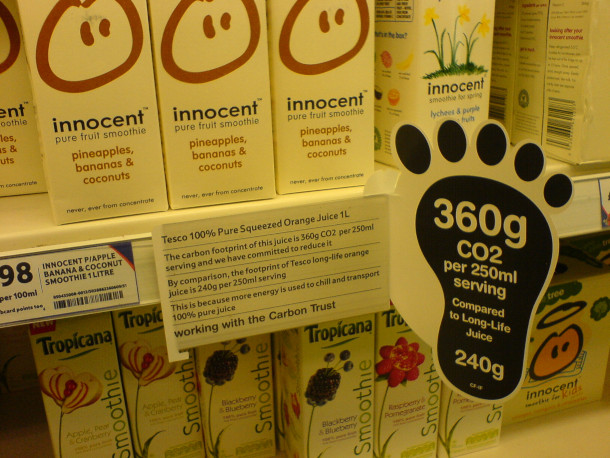
Companies are now adopting carbon labels to inform customers of a product’s estimated carbon footprint. (Photo: Gwire, Flickr, CC BY 2.0)
BASCOMB: It’s Living on Earth, I’m Bobby Bascomb.
DOERING: And I’m Jenni Doering
It's that time of the broadcast when we take a look beyond the headlines with Peter Dykstra. Peter's, an editor with environmental health news that's ehn.org and dailyclimate.org and he joins us from Atlanta, Georgia. Hey, Peter, what do you got for us this week?
DYKSTRA: Hi, Jenni. There's a story that you may have seen in the past few weeks if you watch too much cable TV like I do, about a factory in Rockton, Illinois, that erupted in flames and one of those just horrible looking fires. This is a chemical plant, they made degreasers and lubricants. The owners of the plant brought in specialists who put out the fire using flame retardants that contain PFOAs those substances we've come to know as forever chemicals.
DOERING: Well, I mean, a chemical fire sounds pretty scary. But these PFAS chemicals, they can be pretty dangerous too, huh?
DYKSTRA: Yes, they can. we're discovering more and more potential health risks, including cancer, including liver disease, kidney disease, and these forever chemicals are so named, because they never degrade in the environment, and they can potentially bio accumulate. That's the big worry.
DOERING: Well, so Peter, and I think there are alternatives at this point. Is that right?
DYKSTRA: There are, there alternatives developing. But we also have to be very careful that when you replace potentially dangerous substance, you don't replace it with something that is as dangerous or even more dangerous. That was the case with some replacements for CFCs. Those refrigerant chemicals that are known to damage the Earth's stratospheric ozone layer. What we had in Illinois is a situation with the dangers from the fire, where arguably less than the dangerous from the stuff they use to put the fire out.
#UPDATE: Drone footage from the fire at the Chemtool facility in Rockton. (Courtesy: Karl Hoffman) pic.twitter.com/nvctAGjOav
— 23 WIFR (@23WIFR) June 14, 2021
DOERING: Well, what else do you have for us this week Peter?
DYKSTRA: There's some news from the retail front. There are companies like Logitech, Panera Bread, Unilever, that are adopting carbon labels on their products, essentially the same as if you buy a box of breakfast cereal or some other food. You'll see the carbs, fat, calories, amount as sugar listed on the label on the side of the box. They're now listing the potential carbon footprint. And Unilever is known for many products. The one arguably best known by many of us is Ben and Jerry's ice cream.
DOERING: Well, so the nutrition label on a pint of Ben and Jerry's Peter is regulated by the FDA. But are these carbon labels going to be regulated at all?
DYKSTRA: Not yet. These companies like Logitech and Panera Bread and Unilever say they're doing this for transparency. That's kind of like waving a red flag to various potential investigators to see if it's true. Right now the companies would have a lot more to lose. If it turns out they were somehow fudging on these labels. So let's assume they're doing the right thing.
DOERING: Peter, what do you have for us from the history vaults this week?
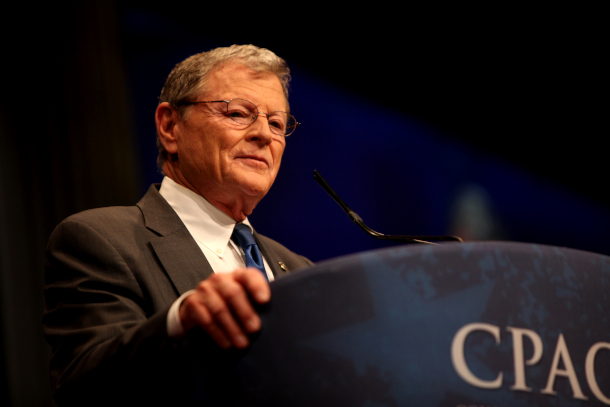
Jim Inhofe has been serving as a U.S. Senator since 1994. He is a well-known climate denier who once threw a snowball on the Senate Floor in an effort to debunk climate change. (Photo: Gage Skidmore, Flickr, CC BY-SA 2.0)
DYKSTRA: Here's a 10th anniversary: June 27, 2011. Senator Jim Inhofe fell seriously ill after swimming in an Oklahoma lake near his home. That lake was contaminated with an outbreak of blue green algae, blue green algae is that deadly stuff that can be brought on by record breaking heat.
DOERING: Hmm. Senator Inhofe is kind of the main climate denier in Congress, isn't he?
DYKSTRA: He's the alpha dog of climate denial in Congress, we're happy to say that he made a full recovery. So a few years ago, I called his office and asked for an interview. And on the occasion of his 100th birthday, we're going to have a chat about the climate hoax and how he sees it being carried out.
DOERING: Well, it'll be quite an occasion to look forward to Peter
DYKSTRA: Right. He accepted, so 10:30 Eastern Time, November 17, 2034, we'll do the interview. And hopefully you can all hear it on the 43rd year of Living on Earth.
DOERING: I think we will. Peter Dykstra is an editor at Environmental Health News. That's ehn.org and daily climate.org. Thanks, Peter. We'll talk to you next time.
DYKSTRA: All right, Jenni, thanks a lot. Talk to you soon.
DOERING: And there's more on these stories at the living on earth website. That's l o e dot org.
Related links:
- ABC | “Foam containing 'forever chemicals' used against plant fire”
- The Washington Post | “Companies Bet Carbon Labels Will Can Help The Climate. Will Consumers Catch On?”
- The Oklahoman | “Sen Jim Inhofe Believes Swimming In Grand Lake Caused His Illness”
[MUSIC: Nelson Riddle and His Orchestra, “Many a New Day” from OKLAHOMA, on Rodgers and Hammerstein’s Oklahoma-The Instrumental Version, by Rodgers and Hammerstein, Capitol Records]
Hiking in 6-Inch Heels

Pattie Gonia on a beach in Hawaii. (Photo: Courtesy of Pattie Gonia)
BASCOMB: June is pride month, a time when the LGBTQ community celebrates inclusion and equality. But the great outdoors is often cast in masculine terms so, it queer and gender non-conforming people can sometimes feel excluded from outdoor spaces. But photographer Wyn Wiley wants to change that. Wyn spends his spare time hiking in the back country as Pattie Gonia, a drag queen complete with wigs, exaggerated makeup and six inch heels. Pattie posts pictures of herself on Instagram to encourage everybody, regardless of gender identity and sexual orientation, to get out and enjoy nature. She has amassed some 300,000 followers on Instagram and joins us now, in those 6 inch heels, to discuss her journey as a queer environmental activist and the solace she finds in nature. Pattie Gonia, welcome to Living on Earth.
PATTIE GONIA: Thank you for having me. I'm excited.
BASCOMB: Yeah, we're so excited to have you. Growing up in Nebraska. What was your relationship like with the environment, with the natural world around you?
Wyn created Pattie Gonia two years ago and has accumulated over 300,000 follows on the account’s Instagram page. (Photo: Courtesy of Pattie Gonia)
PATTIE GONIA: Yeah. Growing up in Nebraska, I had nature all around me, I lived my life, my grandma's farm and in my backyard. And there's no more vivid memory of childhood than like the giant oak tree in my backyard and the swing attached the oak tree. And I also spent a lot of time growing up in Boy Scouts and that brought me outdoors as well.
BASCOMB: Now today, you're putting together your love of nature and your expression of yourself through drag. Can you tell us about that, about hiking outdoors in full drag regalia? What does that look like? And how does it feel for you?
PATTIE GONIA: I feel very lucky that my passions get to intersect so much. I really feel like for anyone in life when you can get a chance to intersect your passions, and kind of Venn diagram one circle over the other and find that middle, ooey gooey like good zone, it's so wonderful. I feel so alive. So when I do drag in the outdoors I feel the most me. And yes, that means literally backpacking in high heels, which you can think is a very silly and stupid and dangerous thing but so is riding a mountain bike down a mountain at 45 miles an hour. So you know pick and choose your danger in the outdoors. I just choose to wear some six inch heels, but it's really beautiful for me to get to also be very feminine and be in touch with my femininity and a space I feel is very feminine. And I feel like we're told through media, through just the narratives and through the archetypes in the outdoors that the outdoors are a very masculine space. They're very, they're there to conquer, and I enjoy being with them, and I enjoy making art with them. It totally changes my experience with the outdoors when I'm in drag as well. I feel like I noticed things I wouldn't out of drag.
BASCOMB: Really like what
PATTIE GONIA: You know when you sit and you do your makeup for three hours and you're in one place, you just notice a lot of things. You notice the birds. You notice the flowers around you, I think I spent so much of my life, especially pre quarantine going at such a fast pace. And I think when you're out on the trail you also can go such a fast pace even though you're walking, you know, you're going by so much so fast. And I feel like when I'm sitting there, I can just notice what's actually around me and can realize how much of a, how much of like a symphony at all is how much everything has a purpose, myself too.
BASCOMB: And what inspired you to start doing drag to begin with?
PATTIE GONIA: I think what inspired me to do drag was finally wanting to do it for myself. I grew up in Nebraska, in an incredibly beautiful environment, but one that basically was told to me only accepted me if I was straight passing. So when I came out, it was conditional love. It was, hey, we love you. This is beautiful. We accept you for who you are, but never do drag but never want to transition to be a female. But never, this never that. Don't change your voice. Don't don't have a feminine voice. So I think drag for me was the release of kind of a lot of toxicity that I'd internalized since initially coming out. And just falling in love more and more with drag ever since. I'm fascinated with the freedom that I feel when I'm a drag.
Many of Pattie’s looks, like this one, are inspired by animals, plants, and the great outdoors. (Photo: Courtesy of Pattie Gonia)
BASCOMB: And so for someone that hasn't seen your Instagram posts, can you describe a typical outfit that you might wear on the trail or even a favorite outfit that you've worn that would really give people an image in their mind?
PATTIE GONIA: Absolutely. So I just want you to think of the most absolutely absurd things you could ever imagine a drag queen to wear and that's literally what I'm wearing. So one of my favorite outfits is actually made by one of my friends, Angela, and the dress is actually a full functioning tent. You can take off the dress, you can literally put poles in it and it turns into a tent. I'm not kidding. So she originally designed it as a jacket that was used to basically bring up the conversation of refugees. So she's made hundreds of these coats to give to refugees to be able to have as jackets slash coats and also as tents that they can sleep in as well. But we're repurposing it for the outdoors as well. So it's fun. I think it's definitely fun to just have fun with fashion to not take it too seriously. Some of my favorite looks are things I throw together like that. And or I have a piece that I want to show and tell with you that I want to describe for listeners.
BASCOMB: That'd be great.
PATTIE GONIA: So this is a wig made of over 100 pieces of plastic.
BASCOMB: Woah, looks like a giant disco ball of plastic.
PATTIE GONIA: Yes, it is very, I think very like Amadeus. Like, like very much queen, old royalty, like can we create a two foot tall wig on a head? Yes, we can. And let's do that of plastic. So this is all differently like upcycled plastic items. And I'm going to set the phone number so I can put it on and then I'll pick up the phone again. So give me one second.
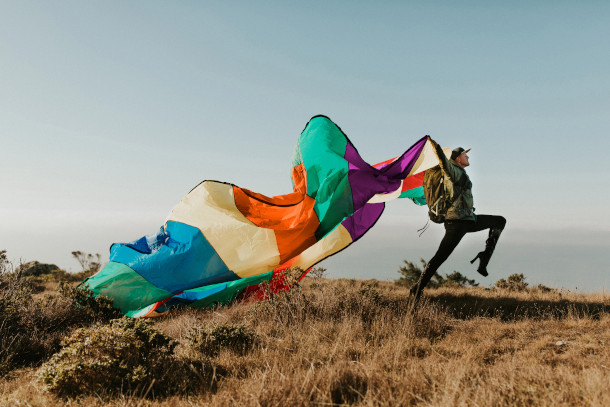
Pattie showing off her six-inch heels. (Photo: Courtesy of Pattie Gonia)
BASCOMB: Perfect yeah.
PATTIE GONIA: Okay, just so you can see the full effect.
BASCOMB: I love it.
PATTIE GONIA: Okay, so this is it. It literally looks like I am wearing just a giant stacked pile of trash on my head because I am.
BASCOMB: Well it looks very, you know, Marie Antoinette to me, you know, like back in that era, there was so over the top with things like that weren't even trying to look real.
PATTIE GONIA: Absolutely. And it's great it like, ruffles in the wind, like you can kind of hear it. We'll do some ASMR. Something I'm thinking about all the time is that drag as a culture is inherently very wasteful. And I'm really trying to deconstruct drag for the purpose of making it as sustainable as can be. So this is a wig made of plastic because plastic wigs you see drag queens wear that look like real hair are literally plastic. So why am I putting new plastic into the world rather than wearing trash? So I am a trashy queen? Here I am.
BASCOMB: Love it.
PATTIE GONIA: So I'm gonna take this off because it's gonna be like audio interference. But yeah.
BASCOMB: It doesn't look too comfortable, either.
PATTIE GONIA: It's actually really comfortable. It's -
BASCOMB: Really?
PATTIE GONIA: One of my most comfortable wigs. Yeah, it's amazing.
Pattie’s short film, Dear Mother Nature about being herself in the outdoors was nominated for several awards. (Photo: Courtesy of Pattie Gonia)
BASCOMB: Yeah, super fun. And what kind of reactions do you get from other people on the trail that are probably not expecting to run into a drag queen while, you know, out and about in the woods?
PATTIE GONIA: Absolutely. Um, it's always a mixed bag. I'm fascinated with how much even just wearing heels even if they're not in for drag, but just hiking in heels, is such a disarming moment, like people will, it'll catch them off guard and notice the heels and they'll light up inside and they're like, oh my gosh, hi. Whoa. And it's always a conversation starter. Of course. It's not like you see people walking in six inch heels out in nature. But I think it's a really beautiful touch point to learn. And I love opening up conversation with people if they're open to it on the trail, but I've definitely had an experience homophobia on the trail, too. I've definitely not felt comfortable at many points on the trail, especially when I'm more in full form drag, have been called a circus act on the trail. I've been called other words, we will not say on public radio, so it's a mixed bag. But I'm amazed at how often it's a positive interaction.
BASCOMB: You know, we've had a few segments on Living on Earth recently about people of color, enjoying the outdoors, and I'm sure you're familiar with the story of Christian Cooper, the African American man who was birding in Central Park when a white woman called the police on him after he asked her to leash her dog. You know, people of color routinely report feeling unsafe or unwelcome in the outdoors. How does that sentiment resonate with you as a queer person, as a drag queen?
PATTIE GONIA: Absolutely. I think the practice of drag really lets me know that the hate that I face and the homophobia that I face is a sliver of what people of color experience, is a sliver of what my trans and non binary queer community members experience on the trail. It's a very different experience in a very privileged experience that underneath drag, I am a white, straight-passing male. And that's something I'm thinking about all the time. And thinking about how much drag really lets my queerness unfold. But the privilege it is to be able to wipe off makeup at the end of the day, the privilege to be able to pack away my heels and have no one know about my difference or about that I'm a member of a marginalized community. So I think it's a really, really interesting practice. And I'm not at all comparing my experience to theirs, but it literally does very much let me know how much work we have to do in the outdoors to truly make them an inclusive place for everybody.
BASCOMB: And why do you think it's important to see queer people in the outdoors?
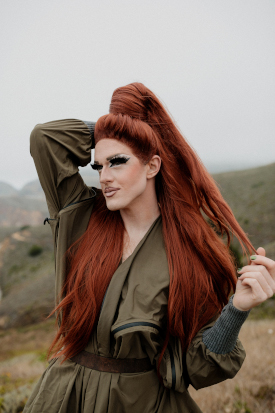
Pattie describes herself as an intersectional environmentalist. (Photo: Courtesy of Pattie Gonia)
PATTIE GONIA: I think it's important to see queer people in the outdoors, because nature is so queer itself. Because queer people are people too. Because if the outdoors can't be a place where we celebrate diversity, something that Mother Nature knows is absolutely key. For the longest time, I didn't see myself represented in the queer community because I'm not a person that's going to spend their Friday or Saturday night in a bar club. And I'm not dogging that. I'm just saying, I'm going to be out on the trail. I'm gonna be out camping. And so I've been really thankful for this journey with Pattie to really remind me how much we can create queer community in the outdoors and how important that is and how many queer people were already out there in the outdoors. We just didn't have as many campfires to kind of gather around.
BASCOMB: Wynn Wildly is Pattie Gonia intersectional environmentalist and self described fetus drag queen. Thank you so much for taking this time with me and sharing your story.
PATTIE GONIA: Thank you so much for letting one of my baby steps of being a drag queen be being on your show.
Related links:
- Pattie Gonia’s Instagram page
- Dear Mother Nature, featuring Pattie Gonia
[MUSIC: Yonji Visomoku/Kim Miguel, “Dance the Night Away” by Van Halen, Cry Baby Records]
BASCOMB: Living on Earth is produced by the World Media Foundation.
Our crew includes Naomi Arenberg, Paloma Beltran, Anna Canny, Jay Feinstein, Mark Seth Lender, Don Lyman, Aynsley O’Neill, Jake Rego, Joshua Siracusa, and Tivara Tanudjaja and Jolanda Omari.
DOERING: Tom Tiger engineered our show. Alison Lirish Dean composed our themes. You can hear us anytime at LOE.org, Apple Podcasts and Google Podcasts, and like us, please, on our Facebook page - Living on Earth. We tweet from @livingonearth. And find us on Instagram at livingonearthradio. Steve Curwood is our Executive Producer. I’m Bobby Bascomb
DOERING: And I’m Jenni Doering, Thanks for listening!
ANNOUNCER: Funding for Living on Earth comes from you, our listeners, and from the University of Massachusetts, Boston, in association with its School for the Environment, developing the next generation of environmental leaders. And from the Grantham Foundation for the protection of the environment, supporting strategic communications and collaboration in solving the world’s most pressing environmental problems.
ANNOUNCER 2: PRX.
Living on Earth wants to hear from you!
Living on Earth
62 Calef Highway, Suite 212
Lee, NH 03861
Telephone: 617-287-4121
E-mail: comments@loe.org
Newsletter [Click here]
Donate to Living on Earth!
Living on Earth is an independent media program and relies entirely on contributions from listeners and institutions supporting public service. Please donate now to preserve an independent environmental voice.
NewsletterLiving on Earth offers a weekly delivery of the show's rundown to your mailbox. Sign up for our newsletter today!
 Sailors For The Sea: Be the change you want to sea.
Sailors For The Sea: Be the change you want to sea.
 The Grantham Foundation for the Protection of the Environment: Committed to protecting and improving the health of the global environment.
The Grantham Foundation for the Protection of the Environment: Committed to protecting and improving the health of the global environment.
 Contribute to Living on Earth and receive, as our gift to you, an archival print of one of Mark Seth Lender's extraordinary wildlife photographs. Follow the link to see Mark's current collection of photographs.
Contribute to Living on Earth and receive, as our gift to you, an archival print of one of Mark Seth Lender's extraordinary wildlife photographs. Follow the link to see Mark's current collection of photographs.
 Buy a signed copy of Mark Seth Lender's book Smeagull the Seagull & support Living on Earth
Buy a signed copy of Mark Seth Lender's book Smeagull the Seagull & support Living on Earth

